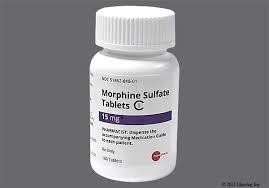A nurse is caring for a client who is receiving morphine for pain. Which of the following findings indicates that the client is experiencing an adverse effect of the medication?
Hypertension
Lacrimation
Tachycardia
Urinary retention
The Correct Answer is D
Choice A Reason:
Hypertension (high blood pressure) is not a common adverse effect of morphine. Opioid medications are more likely to cause hypotension (low blood pressure).
Choice B Reason:
Lacrimation (excessive tearing) is not a typical adverse effect of morphine. Opioids can cause dry mouth and decreased tear production.
Choice C Reason:
Tachycardia (rapid heart rate) is not a common adverse effect of morphine. Morphine and other opioids are more likely to cause bradycardia (slow heart rate) or a decrease in heart rate.
Choice D Reason:
Urinary retention is an adverse effect associated with opioid medications like morphine. Opioids can cause relaxation of smooth muscles, including those in the urinary bladder, which can lead to difficulty or inability to urinate.

Nursing Test Bank
Naxlex Comprehensive Predictor Exams
Related Questions
Correct Answer is D
Explanation
The recommended weight gain during pregnancy can vary depending on a woman's pre-pregnancy BMI (Body Mass Index).
For a client with a prepregnancy BMI of 30.5, the recommended weight gain is approximately 11 to 20 pounds. Therefore, none of the options A, B, C, are within this recommended range.
So, the nurse should inform the client that an acceptable weight gain for her would be between 11 to 20 pounds during her pregnancy.
Correct Answer is C
Explanation
Choice A Reason:
Increasing the flow rate without healthcare provider guidance can be dangerous and should not be done without proper instruction.
Choice B Reason:
Synthetic blankets can generate static electricity, which poses a fire hazard in the presence of oxygen. Clients using oxygen therapy should be advised to use cotton or wool blankets that are less likely to generate static.
Choice C Reason:
"I will check my oxygen equipment at least once daily." This statement indicates an understanding of the importance of equipment safety and maintenance in home oxygen therapy. Regularly checking oxygen equipment for proper functioning is essential for the client's safety. It helps ensure that the oxygen delivery system is working correctly and that there are no issues with flow rate or oxygen concentration.
Choice D Reason:
Isopropyl alcohol is flammable and should not be used to clean oxygen equipment due to the risk of ignition in the presence of oxygen. Clients should use mild soap and water for cleaning nasal cannulas and other equipment.
Whether you are a student looking to ace your exams or a practicing nurse seeking to enhance your expertise , our nursing education contents will empower you with the confidence and competence to make a difference in the lives of patients and become a respected leader in the healthcare field.
Visit Naxlex, invest in your future and unlock endless possibilities with our unparalleled nursing education contents today
Report Wrong Answer on the Current Question
Do you disagree with the answer? If yes, what is your expected answer? Explain.
Kindly be descriptive with the issue you are facing.
